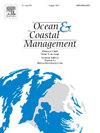DragLess - a holistic approach to gear development: reducing roundfish bycatch and drag in the trawl fishery of Norway lobster (Nephrops norvegicus) off Denmark
IF 4.8
2区 环境科学与生态学
Q1 OCEANOGRAPHY
引用次数: 0
Abstract
In demersal trawl fisheries, advancements in gear technology in the posterior part of the trawl have enhanced size and species selectivity. The integration of these developments into the technical legislation remains, however, limited, with minimal uptake within the industry. This is despite that demersal fisheries are challenged by simultaneously evolving sustainability issues and need not only to reduce unintended bycatch but also preserve habitat and improve fuel efficiency. Consequently, there is a pressing need for fishing gear innovations that offer more holistic solutions. This study, conducted off the coast of Denmark addresses a suite of these challenges in the demersal Norway lobster (Nephrops norvegicus)-directed trawl fishery by simultaneously aiming to minimize catches of unwanted bycatch, reduce drag during gear towing without requiring changes to the existing technical regulations. Moreover, the study endeavors to devise an easily reversible design alteration that allows fishers to retain fish bycatch of commercial sizes when quota is available. In a catch comparison set-up, we found that the bycatch of roundfish was significantly reduced without compromising the yield of Norway lobster when the top panel was constructed of very large meshes through most of the body of a Norway lobster-trawl. Concurrently, the drag diminished by 10 % during gear towing. This research underscores the potential for simple, yet effective, gear modifications to mitigate environmental impacts and enhance sustainability in fisheries operations using trawl.
无拖-一个整体的方法,以装备发展:减少圆形鱼的副捕获和拖网渔业在挪威龙虾(Nephrops norvegicus)丹麦
在海底拖网渔业中,拖网后部的齿轮技术的进步提高了尺寸和物种选择性。然而,将这些发展纳入技术立法的工作仍然有限,行业内的吸收程度最低。尽管如此,同时不断演变的可持续性问题对底层渔业构成了挑战,不仅需要减少意外副渔获物,还需要保护栖息地和提高燃料效率。因此,迫切需要创新渔具,提供更全面的解决方案。这项在丹麦沿海进行的研究解决了挪威海底龙虾(Nephrops norvegicus)拖网渔业面临的一系列挑战,同时旨在减少不必要的副渔获量,减少拖带时的阻力,而不需要改变现有的技术法规。此外,该研究努力设计一种易于逆转的设计变更,允许渔民在配额可用时保留商业规模的副渔获物。在捕捞比较设置中,我们发现,当挪威龙虾拖网的顶部面板由非常大的网组成时,在不影响挪威龙虾产量的情况下,圆鱼的副渔获量显着减少。同时,在齿轮拖曳期间,阻力减少了10%。这项研究强调了简单而有效的齿轮改造的潜力,以减轻使用拖网的渔业作业的环境影响和提高可持续性。
本文章由计算机程序翻译,如有差异,请以英文原文为准。
求助全文
约1分钟内获得全文
求助全文
来源期刊

Ocean & Coastal Management
环境科学-海洋学
CiteScore
8.50
自引率
15.20%
发文量
321
审稿时长
60 days
期刊介绍:
Ocean & Coastal Management is the leading international journal dedicated to the study of all aspects of ocean and coastal management from the global to local levels.
We publish rigorously peer-reviewed manuscripts from all disciplines, and inter-/trans-disciplinary and co-designed research, but all submissions must make clear the relevance to management and/or governance issues relevant to the sustainable development and conservation of oceans and coasts.
Comparative studies (from sub-national to trans-national cases, and other management / policy arenas) are encouraged, as are studies that critically assess current management practices and governance approaches. Submissions involving robust analysis, development of theory, and improvement of management practice are especially welcome.
 求助内容:
求助内容: 应助结果提醒方式:
应助结果提醒方式:


